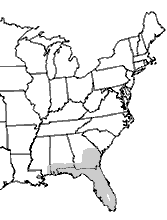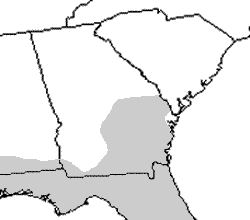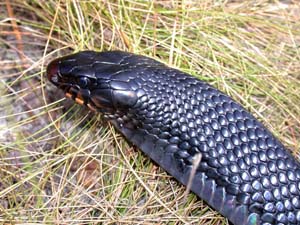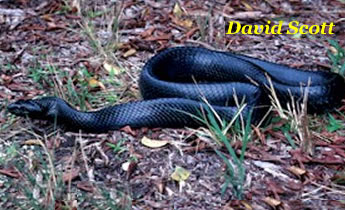Eastern Indigo Snake (Drymarchon couperi)
Eastern Indigo Snake (Drymarchon couperi)



Description: The largest native snake in the United States, reaching 152–213 cm (60–84 in). Glossy bluish-black throughout, including the belly, with the chin and sides of the head often reddish to orange-brown. Juveniles resemble adults but usually show more extensive red on the head. Males grow longer than females.
Range and Habitat: Restricted to Florida and southern Georgia, with smaller populations in southern Alabama and Mississippi. Historical records from South Carolina are considered questionable. Closely related indigo snakes (Drymarchon corais) occur in Texas, Central, and South America. In the Southeast, they are strongly associated with xeric pine-oak sandhills and rely heavily on gopher tortoise burrows for winter refuge, nesting sites, and shelter from summer heat. During warmer months, they may travel long distances and often forage along wetland edges.
Habits: Strictly diurnal and active even in cool winter weather. More likely to be found near wetlands during summer but shift to drier habitats in winter. Breeding occurs in winter. When threatened, indigo snakes may flatten their head, hiss, and vibrate the tail to produce a rattling sound, but they rarely bite. Diet includes mammals, birds, frogs, and other snakes—commonly preying on rattlesnakes and cottonmouths—and occasionally young gopher tortoises.
Conservation Status: Listed as a federally threatened species in Georgia and Florida, primarily due to habitat loss and fragmentation. Legally protected throughout its range.


